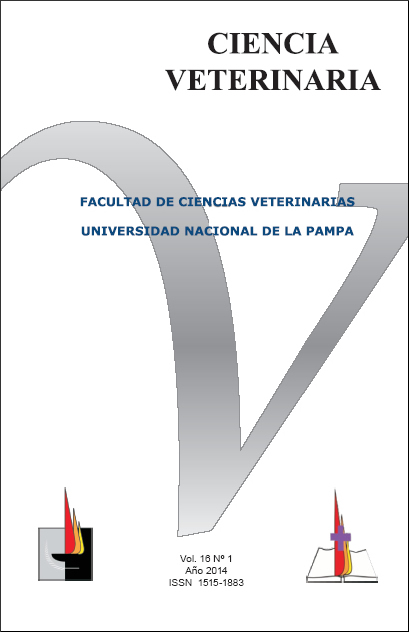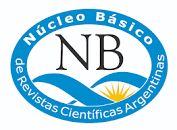Effects of heat waves on lactating Argentinian Holstein cows in the Dairy Module, Facultad de Ciencias Agrarias, UNR
DOI:
https://doi.org/10.19137/cienvet20141619Keywords:
dairy cattle, heat stress, blood parameters, temperature-humidity indexAbstract
The objective of this work was to study blood parameters in dairy cattle during heat waves. The study was carried out during the 2011-2012 and 2012-2013 summer seasons in the Dairy Module at the College of Agricultural Sciences, located in Zavalla (33°1´S, 60°53´O), in the south of the province of Santa Fe. Levels of creatinine, urea, total protein, serum albumin, as well as haematocrit, leukocyte count, and lymphocyte/neutrophil ratio were determined in blood samples collected from ten lactating second- and third- lactation cows during hot waves. The time of occurrence and length of heat waves were determined using the temperature-humidity index (THI), calculated with weather data from the Zavalla Agro meteorology Station, which belongs to the National Weather Service network and to INTA (National Institute of Agricultural Technology). The minimum and maximum levels of creatinine (0.87 and 1.33 mg/100mL, respectively) remained within normal values compared to standard reference ranges. Slight increases in total protein (6.07 to 9.16 g/100mL) and serum albumin (2.83 to 3.99 g/100mL) occurred when the ITH peaked at 76 during the January heat wave. Urea levels were consistently high in all measurements (17.41-70.95 mg/100mL). Leukocyte levels were always above normal ranges, with a marked decrease in the lymphocyte/neutrophil ratio (57 to 36) during the last heat wave of January. Haematocrit levels presented a decrease (32.09% to 29.92%) characteristic of chronic stress. Our results show that heat waves have a negative effect on the blood parameters of Argentinian Holstein cows in ZavallaDownloads
Downloads
Published
How to Cite
Issue
Section
License
Al momento de enviar sus contribuciones, los colaboradores deberán declarar , de manera fehaciente, que poseen el permiso del archivo o repositorio donde se obtuvieron los documentos que se anexan al trabajo, cualquiera sea su formato (manuscritos inéditos, imágenes, archivos audiovisuales, etc.), permiso que los autoriza a publicarlos y reproducirlos, liberando a la revista y sus editores de toda responsabilidad o reclamo de terceros , los autores deben adherir a la licencia Creative Commons denominada “Atribución - No Comercial CC BY-NC-SA”, mediante la cual el autor permite copiar, reproducir, distribuir, comunicar públicamente la obra y generar obras derivadas, siempre y cuando se cite y reconozca al autor original. No se permite, sin embargo, utilizar la obra con fines comerciales.







4.png)


7.png)



